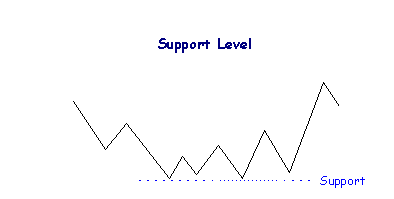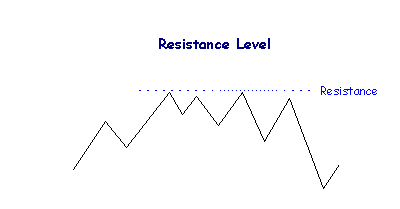In today’s article, we’re going to talk all about breakout trading,Breakout trading is one of our favorite type of entry when trading the markets. This work best in all market conditions Bull/Bear but a trader need to have loads of patience to enter the positions and also ability to hold the positions. breakout trading is the practice of buying stocks as they “break out” above a prior resistance level or “break down” below a prior support level.
Lets First understand what is Support and Resistance in trading
Support and Resistance
Support is the point where enough buyers come into a market to impede a drop in price. It is the price level at which demand is strong enough to prevent the price from declining further. As the price declines towards support and gets cheaper, buyers become more inclined to buy and sellers become less inclined to sell. By the time the price reaches the support level, the theory states that demand will overcome supply and prevent the price from falling below support.

Resistance is where enough sellers enter a market that the price stops rising. It is the price level at which selling is thought to be strong enough to prevent the price from rising further. As the price advances towards resistance, sellers become more inclined to sell and buyers become less inclined to buy. By the time the price reaches resistance, the theory states that supply will overcome demand and prevent the price from rising further.

Below is the weekly chart of Tata Global showing both Support with Green arrow and Resistance with Yeallow Arrow.

Identifying Breakouts
A breakout through resistance is one of the most common ways technicians use to enter a stock. A breakout is when the price rises through a resistance level. The logic is that buying volume is greater than selling volume, so the price rises through the resistance level. The key on breakouts is that volume is sufficiently strong to overcome the selling pressure that usually exists at resistance levels. Without sufficient volume, it is usually not a good idea to buy a breakout, as the price will likely pull back.
For example, notice on the chart below that Tata Global broke out through prior resistance levels at the 180 area with a Bullish engulfing pattern combined by Volumes. Also Stock is breaking out of 80 points triangle. This is usually a good time to buy as your risk reward trade off is favorable. Initial Target should be Range of 80 points and Ultimate Target double of range which is 160 points from the breakout zone of 180.

Below Chart of L&T Finance we had a failed breakout but Next time breakout succeed and did the target.

Breakout Rules
- Trade with the overall market trend.
- Find stock patterns that provide good support and resistance levels.
- Identify exit target and stop levels. While not a way to identify breakouts it is an essential part of the entry strategy if investors expect to be successful.
- On breaks through resistance, buy when volume is sufficiently strong as determined by the strong volume calculator.
- Use limit orders where the price is likely to be executed. Good day traders often set the limit price at 0.05 to 0.10 above the resistance level and issue the order just as the price penetrates resistance.
- Once your trade is executed, set your trailing stop and target prices. Use mental stops if you have the mental discipline and are able to monitor the market. Otherwise establish these stop orders with your broker.
Challenges of Breakout Trading
It’s no surprise then that an estimated 90% of retail traders eventually go bust.
But it’s crucial to think like a technician if you’re going to find success as a breakout trader. Instead of using technicals as a way of predicting where share prices are headed in the future, you’re using technicals to define supply and demand characteristics that lead to a higher probability of a move in one direction than a move in the other.
In other words, you don’t want to predict — you just want to react when a breakout happens.

Please inform which is a suitable training for nifty future day trading strictly following your levels. I need guidance when the prices are between Lower (Sell Below) Level and Upper (Start buying above) level. This is where we loose money hitting stop loss most of the times
Very good article. Many thanks for sharing